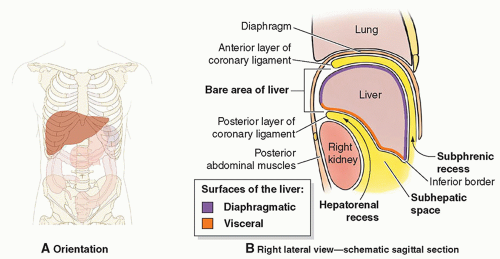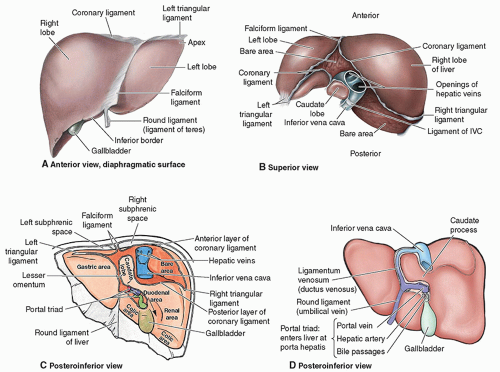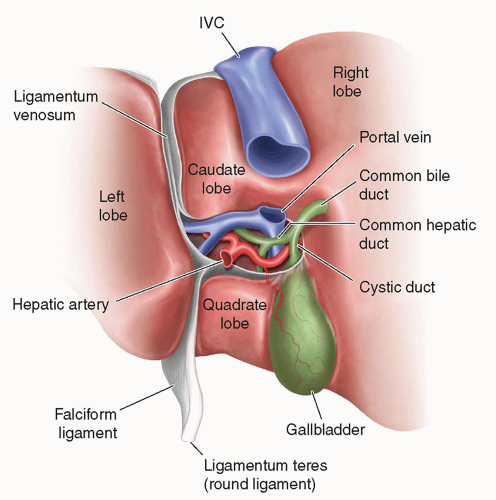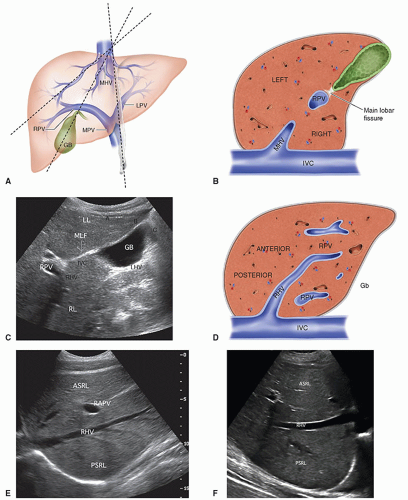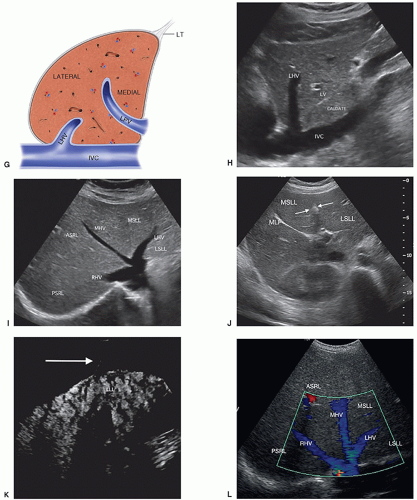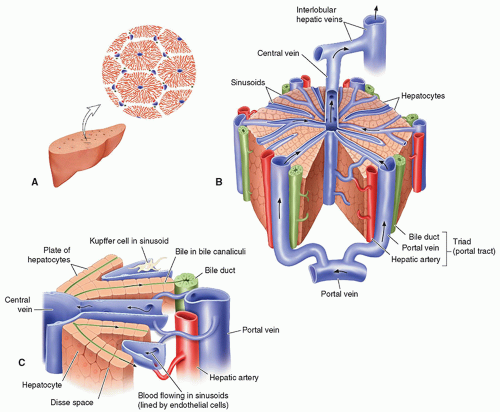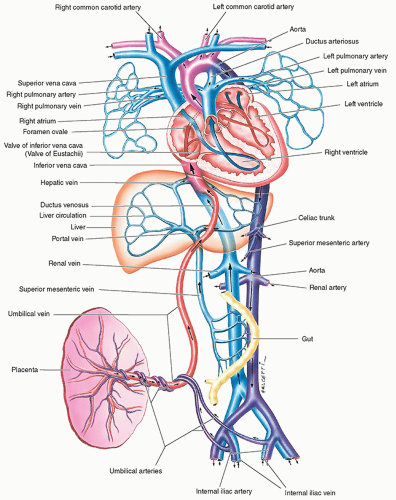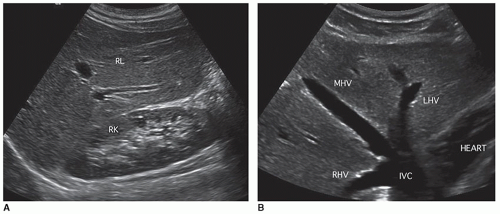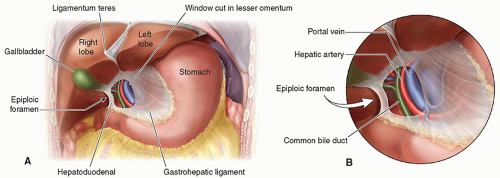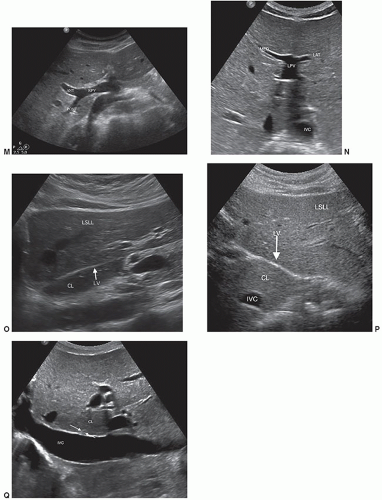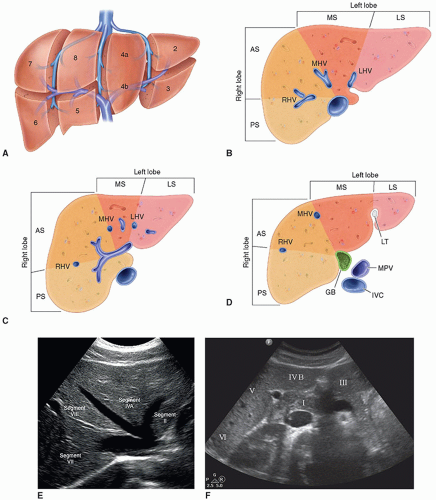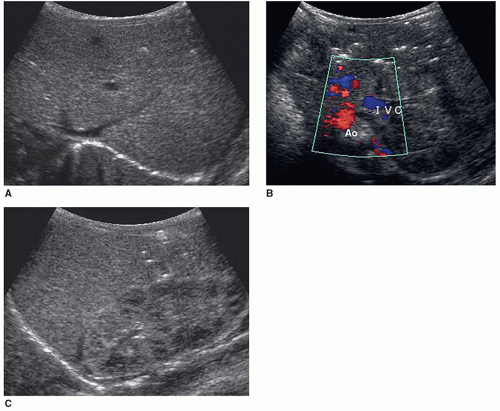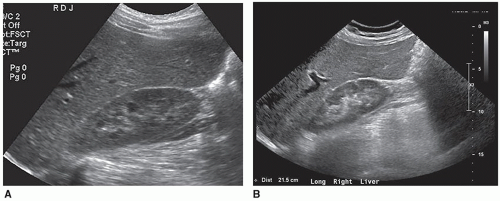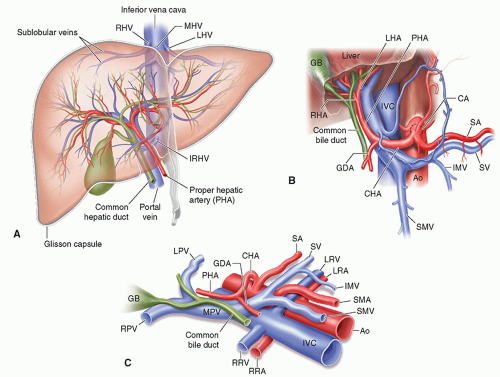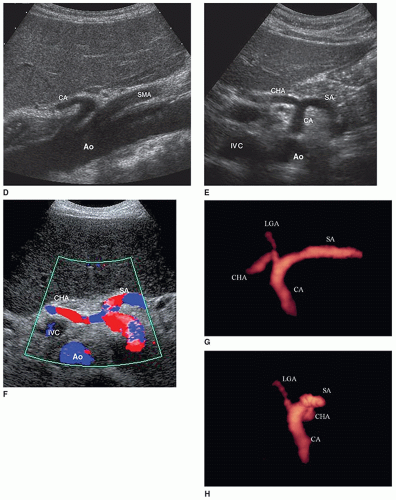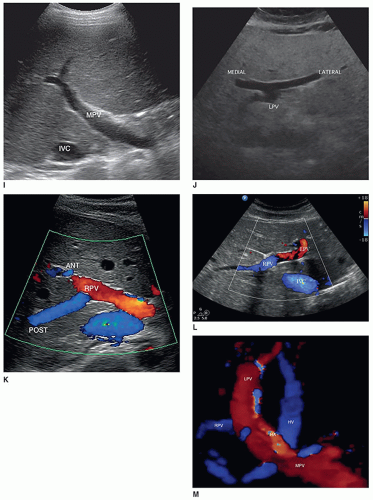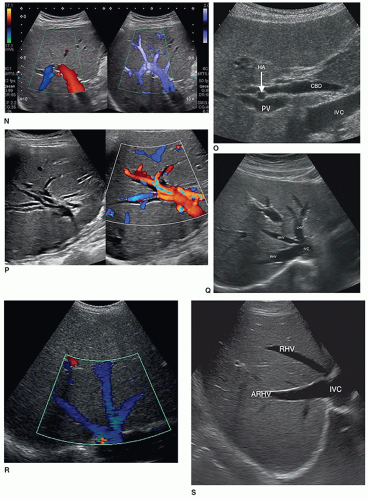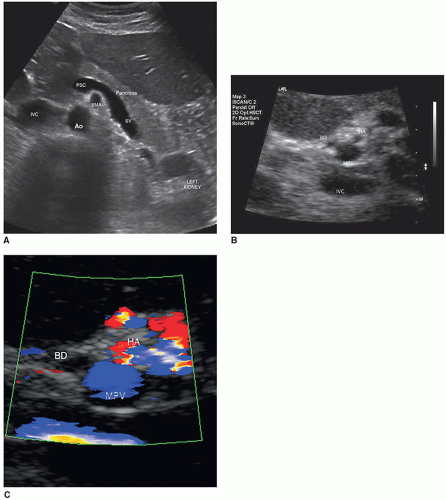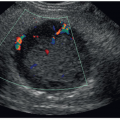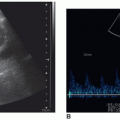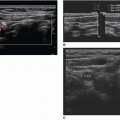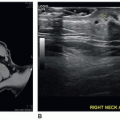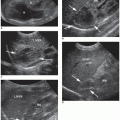Test |
Explanation |
Result |
Clinical Indication |
Bilirubin |
It is formed in large part from heme of destroyed erythrocytes. Heme is converted to biliverdin and then another enzyme changes it into bilirubin (unconjugated). Unconjugated or indirect bilirubin is bound to albumin and transported to liver cells. The liver conjugates the bilirubin with glucuronic acid, making it soluble in water. Most of this conjugated bilirubin goes into the bile. |
Indirect values are increased. |
Body is making too much bilirubin, usually owing to an increase in red blood cell breakdown such as hemolytic anemia and hemolysis, or diseases that affect the liver’s ability to conjugate, such as Gilbert syndrome or Crigler-Najjar syndrome. Typically, causes of increased indirect values cannot be diagnosed with ultrasound. |
|
Conjugated or direct bilirubin is not excreted but remains in the blood. Bilirubin is conjugated by liver enzymes, becomes water soluble, and is excreted in feces and urine. |
Direct values are increased. |
Clinical indications include hepatocellular jaundice from hepatitis or cirrhosis; obstructive liver disease; intrahepatic cholestasis, alcoholic hepatitis, primary biliary cirrhosis, or posthepatic jaundice from lower biliary tract obstruction, biliary stones, pancreatic head pathology, especially cancer. Typically, causes of increased direct values can be diagnosed with ultrasound.
Most laboratories report the total value and the direct (conjugated) value. The indirect (unconjugated) value is calculated by subtracting the direct value from the total. |
ALT |
It is a necessary enzyme in Krebs cycle for tissue energy production, with largest amounts in the liver, smaller amounts in the kidney, heart, and skeletal muscle. When damage to these tissues occurs, ALT increases. ALT is a rather specific indicator of hepatocellular damage. It is used in conjunction with AST to help distinguish between cardiac and hepatic damage. AST levels are very high and ALT levels are only mildly elevated with cardiac damage. ALT can differentiate between hemolytic jaundice when there is no rise in ALT and jaundice owing to liver disease with high ALT levels. Hepatitis, cirrhosis, Reye syndrome, and toxic drug treatment can be monitored with ALT. |
Values are increased. |
Clinical indications include liver cell damage owing to hepatitis, cirrhosis, or liver tumors; Reye syndrome, or biliary tract obstruction; other diseases involving the liver, heart failure, alcohol or drug abuse; its levels are elevated with some renal diseases, some musculoskeletal diseases, systemic lupus erythematosus, other conditions that cause trauma or hypoxia, and hemolysis. Ratio of AST to ALT can be meaningful. AST levels are higher in cirrhosis and metastatic carcinoma of the liver. ALT levels are usually higher in acute hepatitis, alcoholic liver disease, and nonmalignant hepatic obstruction. |
AST |
An enzyme found in all tissues, but largest amounts are present in in cells that use the most energy, such as liver, heart, and skeletal muscles. AST is released with injury to cells. |
Values are increased. |
In hepatitis, it is elevated before jaundice appears; cirrhosis, shock, or trauma may cause lesser elevation; other conditions include Reye syndrome and pulmonary infarction. Damaged cardiac cells have other correlating examinations. Ratio of AST to ALT is significant (see clinical indications for ALT). |
ALP |
This enzyme is found in the tissues of liver, bone, intestine, kidney, placenta; higher levels are normal with new bone formation in children and in pregnancy; it is normally excreted in bile. |
Values are increased. |
Clinical indications include biliary obstruction from tumors or space-occupying lesions, hepatitis, metastatic liver carcinoma, pancreatic head carcinoma, cholelithiasis, or biliary atresia; elevation may also occur from bone or kidney origin and from congestive heart failure owing to hepatic blood flow obstruction. |
LDH |
An enzyme in all tissues, LDH is normally not used for liver evaluation because other enzyme values are more specific. LDH4 and LDH5 are found in liver, skeletal, kidney, placenta, and striated muscle tissue. |
Values are increased for LDH4 and LDH5. |
Liver damage owing to cirrhosis, chronic viral hepatitis, etc. |
GGTP or GGT |
Responsible for the transport of amino acid and peptide across cell membranes, it is found chiefly in liver, kidney, and pancreas, with smaller amounts in other tissues. The test is the most sensitive indicator of alcoholism and is also sensitive to other liver diseases. |
Values are increased. |
Clinical indications include marked elevation in liver disease and posthepatic obstruction; moderate elevation with liver damage from alcohol, drugs, chemotherapy; elevation may also be owing to pancreatic, kidney, prostate, heart, lung, or spleen disease. |
PT |
Test used to determine pathologic deficiency of clotting factors due either to liver dysfunction or to absence of vitamin K. |
Values are increased. |
Bleeding disorder, correlated with obstructive disease, PT can be corrected with parenteral vitamin K; when correlated with parenchymal disease, scarred nonfunctioning liver tissue does not produce prothrombin. |
Albumin |
The smallest protein molecule, it makes up the largest proportion of total serum protein. It is almost totally synthesized by the liver. Albumin plays an important role in total water distribution or osmotic pressure because of its high molecular weight. With dehydration, albumin levels increase. A lack of albumin in the serum allows fluid to leak out into the interstitial spaces and into the peritoneal cavity causing ascites. |
Values are decreased. |
Chronic liver disease, especially cirrhosis; ascites from cirrhosis, right-sided heart failure, cancer, or peritonitis; other conditions related to the GI tract, inflammation, pregnancy, and aging. |
Values are increased. |
Clinical indications include hemolysis, other conditions related to dehydration, exercise, anxiety, depression. |
A/G ratio |
Albumin divided by globulins equals the ratio. When evaluating liver disease, serum globulin is produced by the Kupffer cells and albumin is synthesized in the liver. In chronic liver disease, the A/G ratio is reversed where albumin is decreased and globulin is elevated. |
Decreased total protein with decreased albumin and elevated globulin (reversed A/G ratio) |
Chronic liver disease, especially cirrhosis, ascites from cirrhosis; right-sided heart failure, cancers, or peritonitis and other conditions related to the GI tract; and inflammation, pregnancy, and aging |
AFP |
A globulin formed in yolk sac and fetal liver, it is normally present only in trace amounts after birth; produced with primary carcinoma of the liver and certain types of testicular cancer. |
Values are increased. |
In nonpregnant adults, carcinoma of the liver, as in hepatocellular carcinoma; in the pediatric patient, hepatoblastoma |
AFP, alpha-fetoprotein; A/G, albumin/globulin; ALP, alkaline phosphatase; ALT, alanine aminotransferase; AST, aspartate aminotransferase; GGTP or GGT, gamma-glutamyl transpeptidase; GI, gastrointestinal; LDH, lactic dehydrogenase; PT, prothrombin time. |
|
